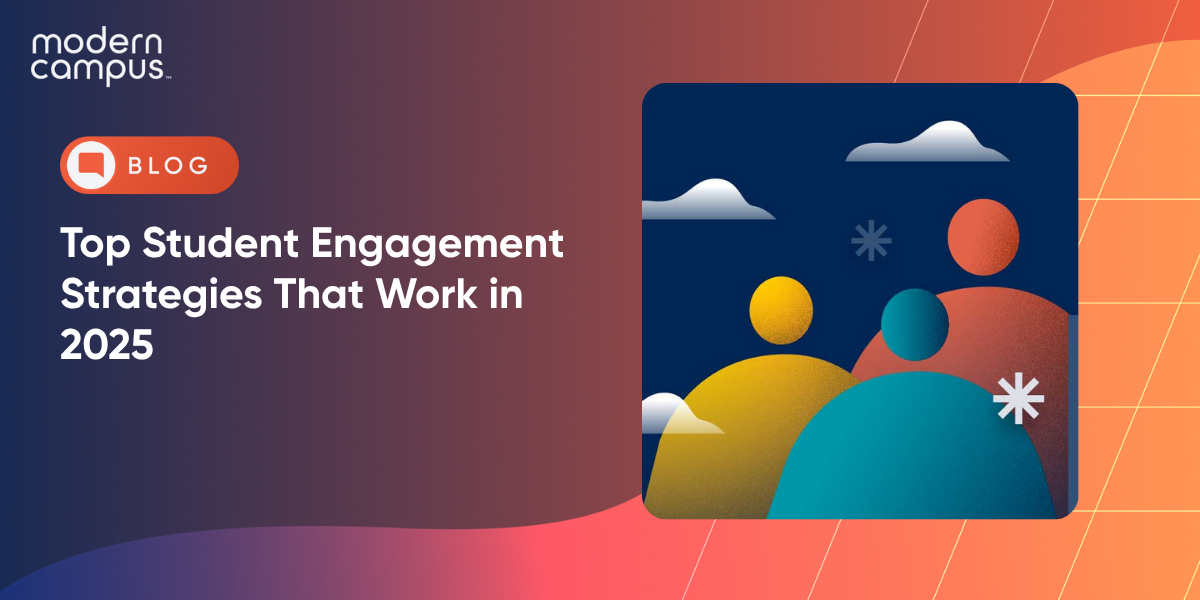Table of Contents
Key Takeaways
- Enrollment rates continue to eb and flow in relation to shifting attitudes about higher education and changing student needs, along with evolving career and economic trends.
- Healthy enrollment and retention depend not solely on admissions practices nor initiatives guided by the Office of Student Enrollment. Individuals throughout the institution can and must develop creative strategies to attract, enroll, and support modern learners.
-
Flexible programming, lifelong learner opportunities, and technological integrations are crucial to future-proofing enrollment. Over the next ten years, learner demand for more flexible and accessible learning options will increase, and institutions must evolve in order to keep up.

Introduction
Growing and maintaining high enrollment within higher education is so much more than a numbers game. Enrollment fuels innovation, shapes academic excellence, and ensures the continuity of knowledge.
Most college and university professionals understand the importance of attracting, retaining and supporting learners year after year. Yet, institutions that fall into old habits and fail to embrace change will fall behind.
In order to stay relevant within a fast-changing world and appeal to evolving student expectations, colleges and universities cannot keep their enrollment strategies stagnant.
So, how can colleges and universities ensure steady enrollment within their programs?
First, they must understand the top factors that impact enrollment—including external challenges, institutional attributes, and learner preferences. Next, they must develop strategies that intentionally address appropriate enrollment trends and offer personalized support to their students. Finally, anyone invested in increasing enrollment must keep an eye on the near future and understand how today’s trends point toward future enrollment barriers and opportunities.
Here, we address how to increase student enrollment, how to leverage student enrollment software, and more.
 Factors affecting student enrollment
Factors affecting student enrollment
Enrollment rates and trends are impacted by a large number of social, personal, andinstitutional factors, including:
Economic Conditions
The state of the local or national economies can have a significant impact on enrollment.
During economic downturns, more people may choose to enroll in higher education to improve their job prospects, while during prosperous times, some may opt to enter the workforce immediately.
Enrollment Costs
High tuition costs can deter new students from enrolling, while lower costs can make higher education more accessible.
Other direct costs like room and board, books, and student activity fees can also influence affordability, as can more indirect fees that students may need to pay in order to stay enrolled, such as childcare, car insurance or public transport costs, healthcare, and eldercare.
Financial Aid Availability
The availability of scholarships, grants, loans, and other forms of financial aid can greatly impact enrollment. The ease of acquiring and retaining such aid can influence a student’s decision to enroll at a particular institution or institution type.
Demographics
Shifting local, state, and national demographics can impact enrollment trends in various ways.
For example, an aging population might result in a lower demand for traditional undergraduate programs while increasing demand for continuing education or workforce development courses. Increased diversity—among religion, race, gender, socio-economic status, and other demographics—also means that institutions must evolve in order to appeal to changing student needs, habits, and interests.
Employment Opportunities
Perceptions of job prospects after graduation, including salary projections, can impact enrollment decisions. Institutions with academic programs related to high-earning career fields may see higher enrollment than programs whose graduates earn lower salaries or have fewer opportunities for advancement.
Geographic Location
The location of an institution is important for more than just the millions of learners who can only afford to study near home; the livability of a region is also crucial. A region’s affordability, safety, job prospects, childcare options, and entertainment offerings can all influence enrollment.
Reputation and Ranking
Students may be more likely to enroll in well-known and highly-ranked colleges and universities.
The American Educational Research Association found that institutions that made the top 25 on the U.S. News & World Report rankings saw a 6 percent to 10 percent increase in applications. And, in a 2019 survey of incoming students, 15 percent of respondents named rankings as “very important” in their enrollment decision.
Academic Programs
The availability of specific academic programs, courses, and credentials that align with a student's interests and career goals can affect enrollment.
Institutions with strong programs in a particular field may attract more applicants. Institutions that allow students to double-major or minor, build their own degree programs, or acquire academic credits via internships may also see higher enrollment.
Access to Technology
Technology guides how many of today’s learners engage within their community, obtain news and information, and even develop a sense of self. Thus, access to reliable technology and an institution’s willingness to adapt to emerging technologies can greatly influence enrollment and retention.
Students say their tech priorities include access to reliable campus WiFi, a centralized student portal , online course offerings, and digital course materials.
Cultural and Social Factors
Cultural and social factors, including family expectations and peer influences, can play a role in enrollment decisions.
Students may choose to follow the educational paths of their families or friends, whether by enrolling in the same institutions or seeking out similar degree programs. High school graduates whose families skipped higher education in favor of immediately joining the workforce may also elect not to pursue a college degree.
Marketing and Outreach Efforts
Enrollment is often indicative of an institution’s marketing and outreach efforts.
The quality and quantity of digital advertising, mailers, recruitment events, social media campaigns, the institution’s website, and text messaging conversations, among other efforts, can influence students' initial interest and discussion to enroll.

Government Policies
Local, federal, and state policies can influence a student’s interest or ability to pursue higher education. This can include policies related to immigration, affirmative action, student loans, transfer credits, and work-study programs.
Admissions Policies
Whether or not a student is accepted to an institution will obviously affect their enrollment. Additionally, students may elect not to apply in the first place if they view the admissions process as too laborious or expensive.
The support, care, and communication provided to applicants will also impact their view of the institution; students who are disappointed with the application process may pick a different college or university.
Health and Safety Concerns
As seen during the COVID-19 pandemic, health and safety concerns can influence enrollment. These can also include natural disasters (which impact a campus’s structures or students’ financial health), public health crises, and instances of violence or tension near an institution.
Cultural and Social Trends
Many of today’s learners look to invest their time, money, and loyalty toward organizations and communities that align with their personal values. Societal trends and movements, along with an institution’s stated values and demonstrated actions, can, therefore, influence enrollment.
 Strategies for increasing student enrollment
Strategies for increasing student enrollment
Although many of the above factors are outside of any one college or university’s direct control, institutions can still take action to overcome burdensome challenges and fuel encouraging conditions to increase enrollment. Here are four ideas:
1. Improve outreach and recruitment efforts
Business leaders know the success of any product is reliant on messaging; the right prospective buyers must be defined, reached, and sold to. So, too, is the case with higher education. Enrollment numbers can dramatically soar or fall based on the strength of marketing, advertising, and outreach efforts.
Here are some ways for institutions to better reach, engage, and attract modern learners within an increasingly competitive higher education marketplace:
- Investing in digital marketing, including online advertising and social media campaigns , in order to target prospective students where they spend much of their time
- Ensuring the institution's website is user-friendly, mobile-responsive, and contains updated information about programs, admissions, financial aid, and campus life
- Leveraging your course catalog as a marketing tool, guided by these five steps
- Engaging in content marketing by publishing blog posts, student stories, videos, and webinars that speak to students’ needs and interests
- Connecting with prospective students via text messaging to remind them about application deadlines, campus events, and other important information
- Giving accepted students access to your student engagement hub as a way to introduce them to campus events, student organizations, and other co-curricular activities
- Delivering a personalized digital experience that connects students to their programs, resources, and tools that appeal to them most
- Showcasing the ROI of academic programs through clear career pathways that highlight market data, salary projections, and employment trends
- Attracting more learners to your continuing education and workforce development programs using tools specifically built for non-traditional enrollment
Enrollment is a shared responsibility across every department of an institution. Institution leaders, support staff, and faculty must collaborate in order to attract new demographics of learners to higher education programs, help students continually overcome external challenges, and sustain the institution’s reputation, finances, and mission. Finding new ways to increase student enrollment is far from simple, and the future is not entirely predictable, but by embracing innovation, making data-informed decisions, and listening to student needs, colleges and universities can gain a clear competitive advantage within a crowded field.



